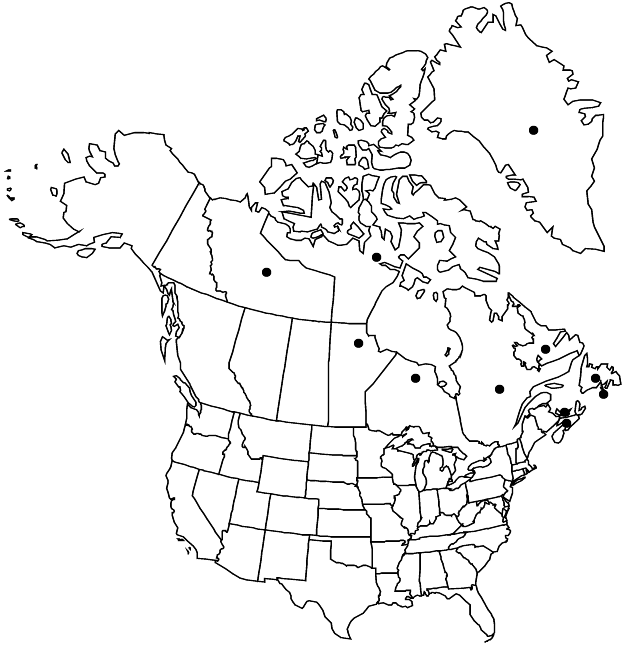Arenaria humifusa
Fl. Lapp., 129. 1812.
Plants perennial, matted. Taproots filiform; rhizomes weak, slender, 0.5–15+ cm. Stems 5–40+, flowering-stems erect to ascending, green, 2–8 (–10) cm; internodes terete to angular, 1/2–4 times as long as leaves, shiny, glabrous or occasionally sparsely stipitate-glandular at distalmost internodes. Leaves connate basally, with scarious sheath 0.2–0.3 mm, sessile; blade weakly to prominently 1-veined, narrowly oblong or elliptic to ovatelanceolate, 2–12 × 1–3 mm, subsucculent, margins thickened, herbaceous, shiny, smooth, apex blunt to acute, prominently pustulate or not, glabrous; axillary leaf clusters absent. Inflorescences terminal, open, leafy, 1–3-flowered cymes or often flowers solitary. Pedicels erect in fruit, 1–10 mm, minutely retrorsely pubescent to stipitate-glandular. Flowers: sepals green, 3-veined, 2 lateral-veins 1/2–3/4 times as long as midvein, more prominent in fruit, not keeled, ovate (herbaceous portion ovate), 2.5–4 mm, not enlarging in fruit, apex obtuse or somewhat acute, not pustulate, glabrous; petals oblanceolate, 3–4 mm, ± 11/2 times as long as sepals, apex acute. Capsules tightly enclosed by calyx, broadly ellipsoid, 4–4.5 mm, ca. 11/4 times as long as sepals. Seeds 12–18, brown, reniform, compressed, 0.5–0.7 mm, shiny, faintly rugulose. 2n = 40, 44 (both Europe).
Phenology: Flowering spring–summer.
Habitat: Moist, calcareous gravels and rock crevices
Elevation: 0-100 m
Distribution

Greenland, St. Pierre and Miquelon, Man., Nfld. and Labr., N.W.T., N.S., Nunavut, Ont., P.E.I., Que., Europe
Discussion
Arenaria humifusa is similar to A. longipedunculata, but is smaller in some dimensions than that species.
Selected References
None.
Lower Taxa
"/4timesaslongassepals" is not declared as a valid unit of measurement for this property."/2-3/4timesaslongasmidvein" is not declared as a valid unit of measurement for this property.